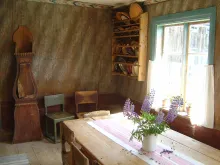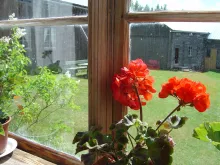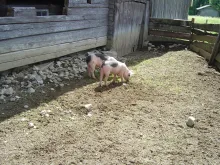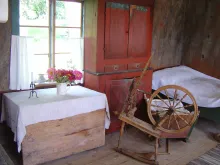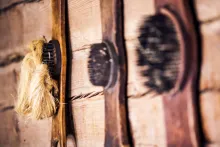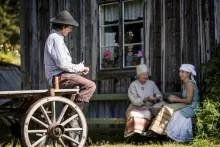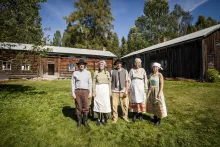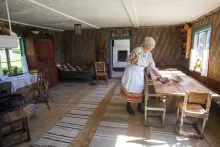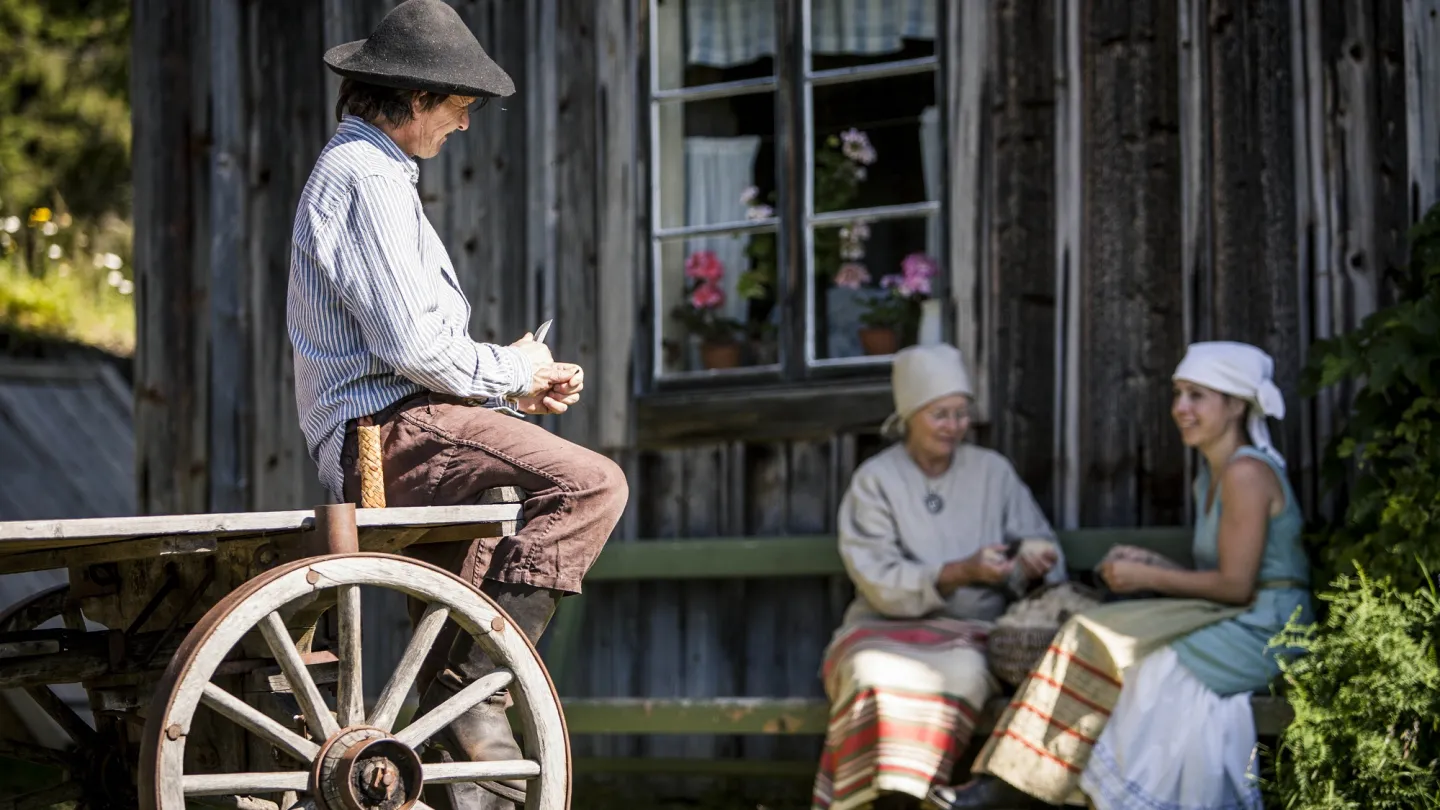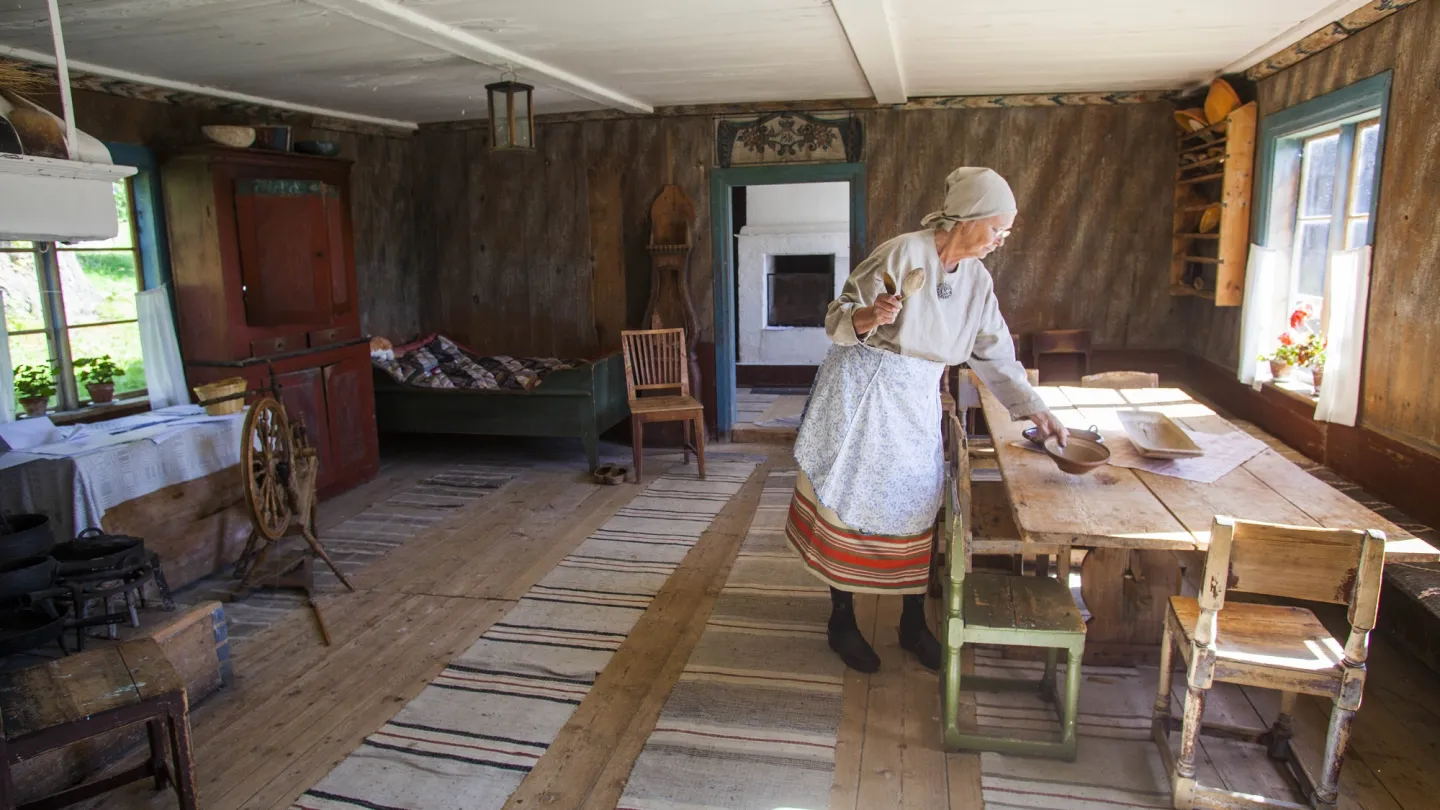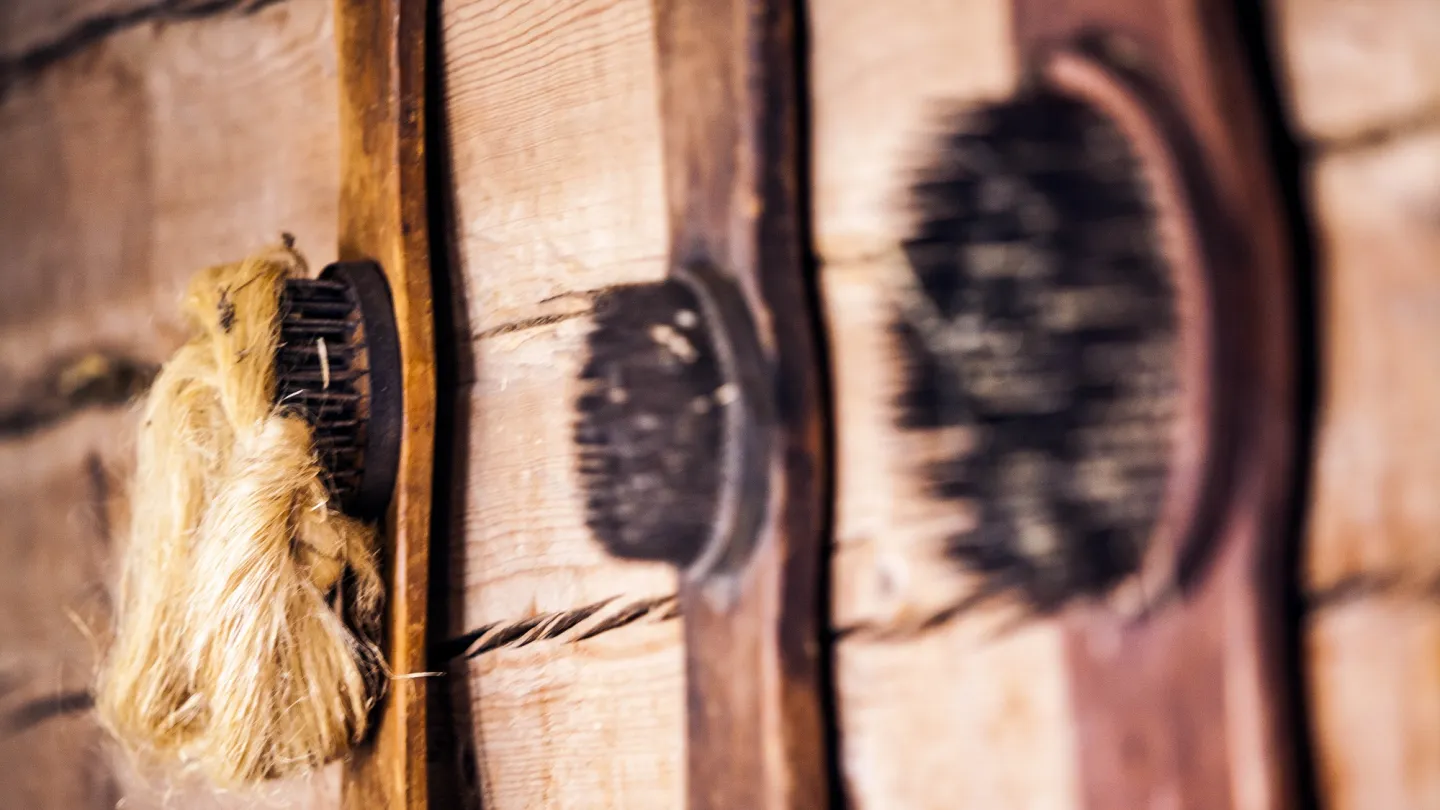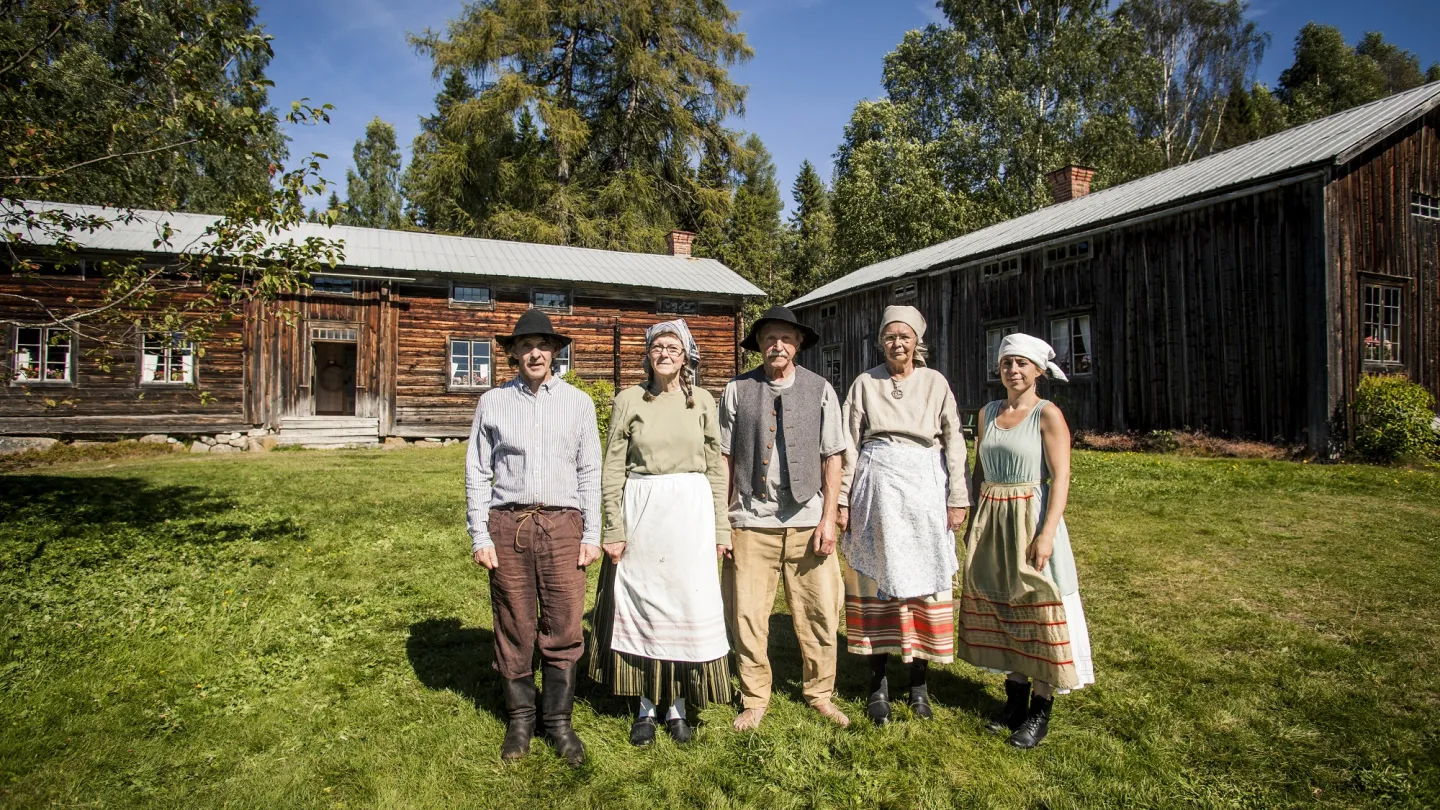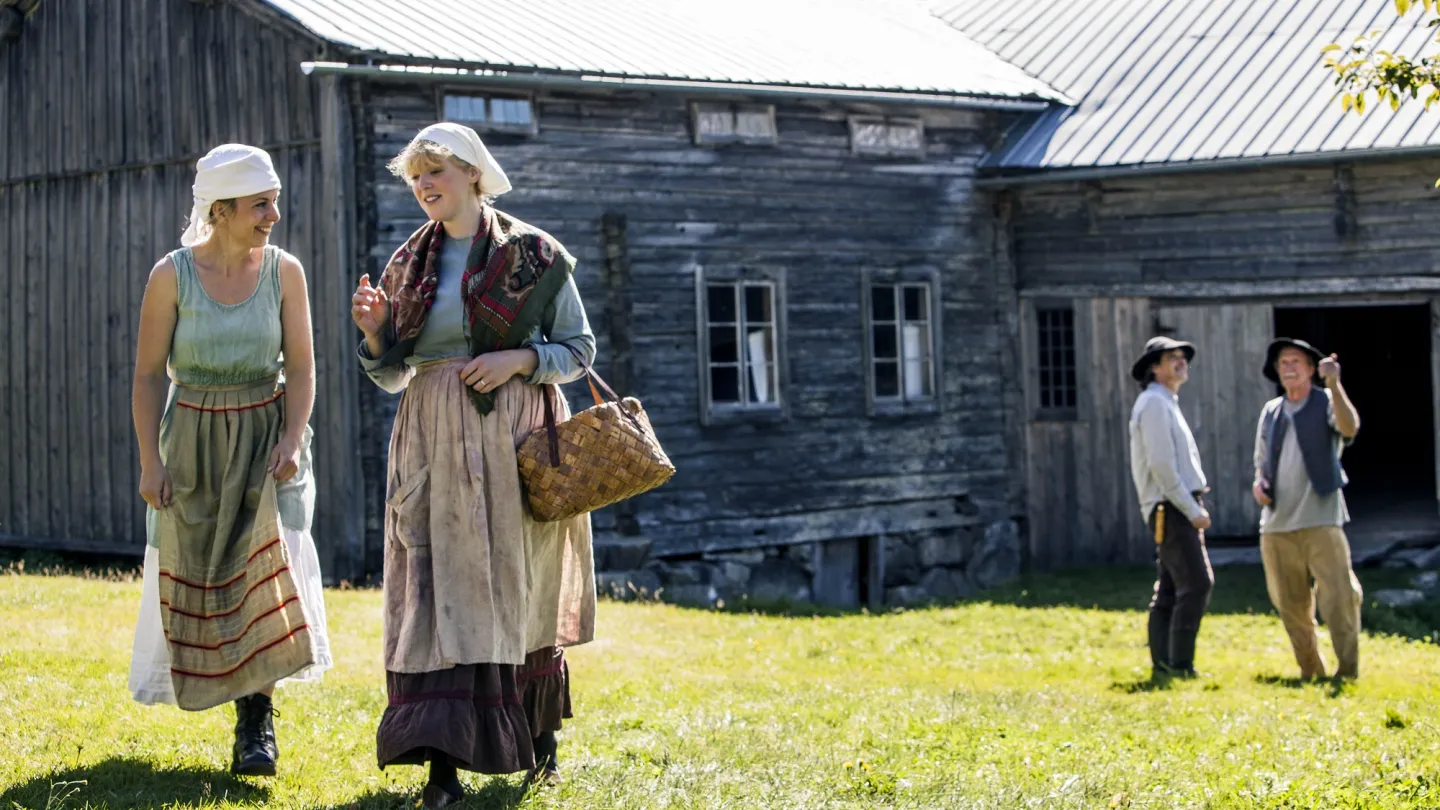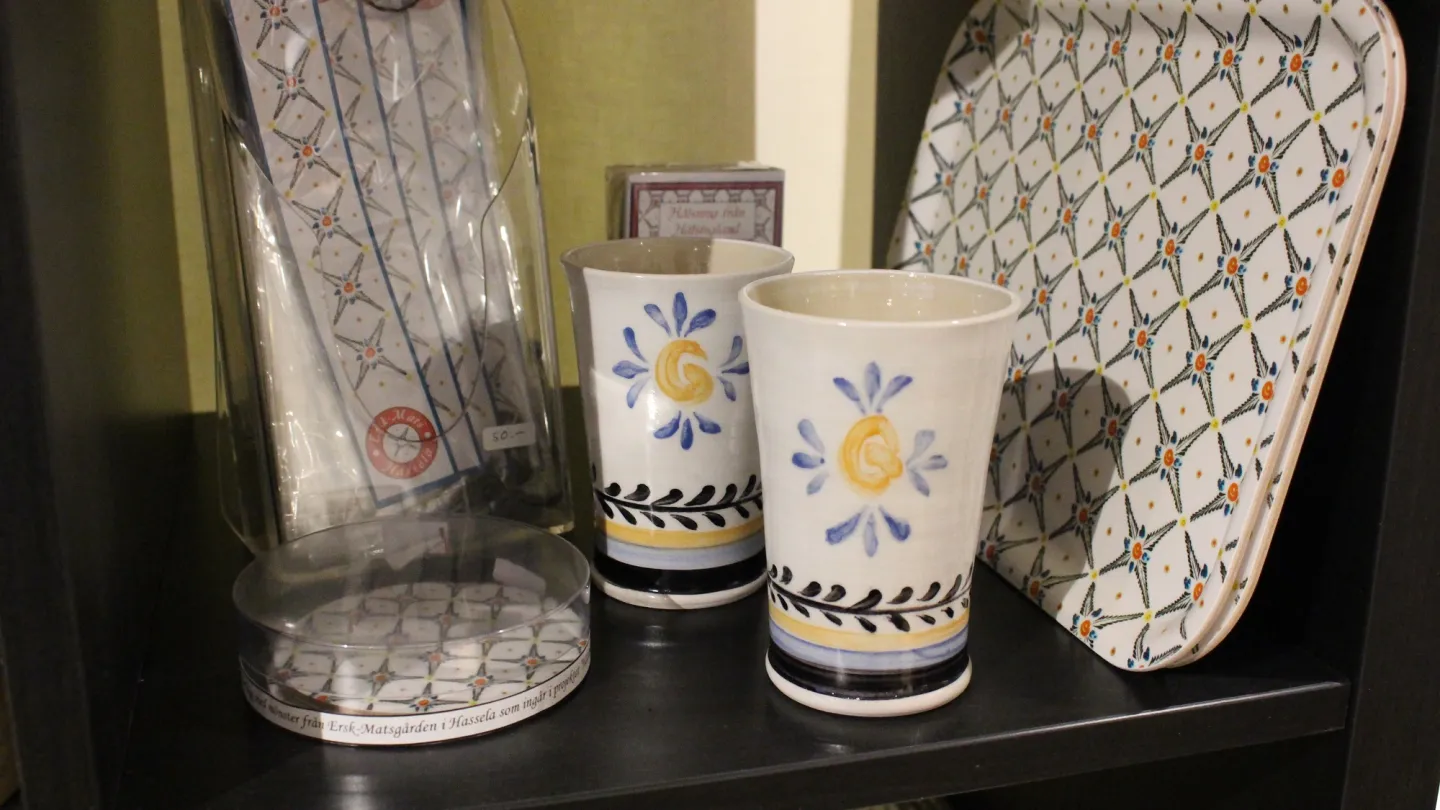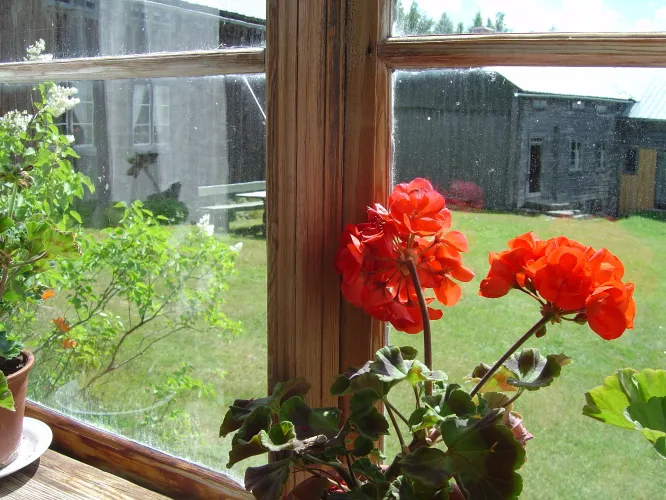
The Farm contains about fifthteen buildings, whereof two were residential buildings. One of the residential buildings, "Norr-på-gården" (North-of-the-farm), was first built as far back as 1770, but with older parts from the home sharing time. The other, "Yst-på-gården" (East-of-the-farm), was first built 1818 as a so called "exeption cabin" for Erik Matsson and his wife Karin.
The Hälsingland farm Ersk-Mats - Here you can also find a grand barn complex with barn, brewhouse, cabin for baking, lodge, sheep house, pig house, threshing floor and basement. Everything was brought together in 1846, which also was the last big construction on the farm. The barn contains, in addition to stables with space for three horses, a piggery, a meat stall and the old privy with five holes.
The old waterwork is restored and functionable. It's powered by a large waterwheel and consists of a mill, flax crusher, flax scutching and a chip plane. The water gate and gutter has also been restored. The farm also contains a wagon shed, a summer barn, wooden storehouse, sauna and a whole lot of haw barns.The farm had everything that was needed to manage during the days of self catering. Our desire is to be able to show the visitors how a self catering farm worked during the middle of teh 19:th century.
All of the houses are decorated and furnished. The work to preserve, manage and keep the farm alive continues.
Summer 2025
June to August
Opening hours: Wednesday–Sunday 12.00–16.00
Guided Tours
Thursday-Sunday Farm tour 12.00
Thursday-Sunday Farm tour 14.00
Price 2025 - 100 sek/tour and person. Kids up to 12 years old go for free.
The old water mill is up and running 12.00-16.00 on Fridays, no payment required.
The farm is open on Wednesdays, but there are no tour guides then. You are instead welcome to see how the green cultural heritage is alive and activly preserved. The cows and sheep are grazing in the paddocks. You can buy food and fika too.
Café
The café is open 12.00-16.00 hen the farm is open. Menu and pricing can be found on nordanstig.se/erskmats
Easiest to pay is with Swish or credit/bank card, cash is used as a last option.
Booking and ordering
Anna Krohn, cultural center hostess, 072-238 59 90
The farm can be opened at other dates and time on requests.
More information:(+46) 072-238 59 90.
Monentary contributions are greatly apriciated and can be left in moneybox on location.
More history
In the vast forest area that spreads out in northern Hälsingland, close to the border of Medelpad, is Ersk-Matsgården, a self substaining farm, built by descendants of the Swedish Finns who immigrated to these regions about 400 years ago.The current farm's buildings were mostly built in the 19th century, which is why the farm cannot be considered a typical Finnish farm. Instead, it resembles typical Swedish farms from that era. Life at Ersk-Mats was largely characterized by self-sufficiency, which also came to characterize the design of the buildings with many ingenious detailed solutions. The farm was inherited within the same family until 1906 when it was sold to a forestry company. However, the previous owner and family still lived there and an unmarried son lived there until the early 1960s. Since the farmers did not own the farm and the forest company had no interest in modernizing, the buildings did not undergo any major changes during the 20th century.
The forest company donated Ersk-Mats to the municipality of Nordanstig in 1970, but the farm was then in great need of measures for the future. In the years 1981-85, an extensive restoration was carried out, which included both the interiors and exteriors of the buildings. In the same year as the restoration, the Ersk-Matsgården municipal foundation, which has had the task of running and showing the farm to the public as a living museum farm, was disassembled.
Today, the foundation does not exist, but the municipality's responsibility to preserve, manage and make the farm alive.
Life at Ersk-Mats
Self-sustaining is a term that is often used when the life of farmers in older times is to be described. Rarely, however, is the concept as justified as in this case. At Ersk-Mats, people were truly self-sufficient, with, for example, their own waterworks with flax press and shaft, mill, saw and chip planer. In addition, there was a forge on the farm, threshing trail with lodge and sauna and ria (building for drying wet cereal). The farm's animals consisted of cows, horses, pigs, sheep and chickens. Close to the residential buildings was a cabbage and hop farm as well as a kitchen garden, and outside these were fields and meadows. Add to that miles of forests that provided both timber and hay as well as good hunting and fishing opportunities.
However, being self-sufficient did not have to mean that one was isolated from the outside world, and in Ersk-Mat's case it certenly was not. Contacts with the Swedish population down in the so-called "forward parish" were close because the church was located here, but other types of contacts had also occurred. Widmark mentions, for example, how farmers from the parishes of Hög, Tuna and Rogsta in the west, who lacked good pastures, let their cattle be bred in the summer for a fee, mainly in the Kölsjö area. This probably also explains why the summer barn at Ersk-Mats has a significantly larger number of stalls than the normal barn and why the farm used to have two stalls. Widmark also traditionally points out livestock farming as the parish's main livelihood. At Ersk-Mats, like the majority of other large single farms in the forest, there was a subordinate croft on the property. The crofters who lived in the three crofts on Ersk-Mat's land were obliged to annually perform a certain number of days' work on the farm.
